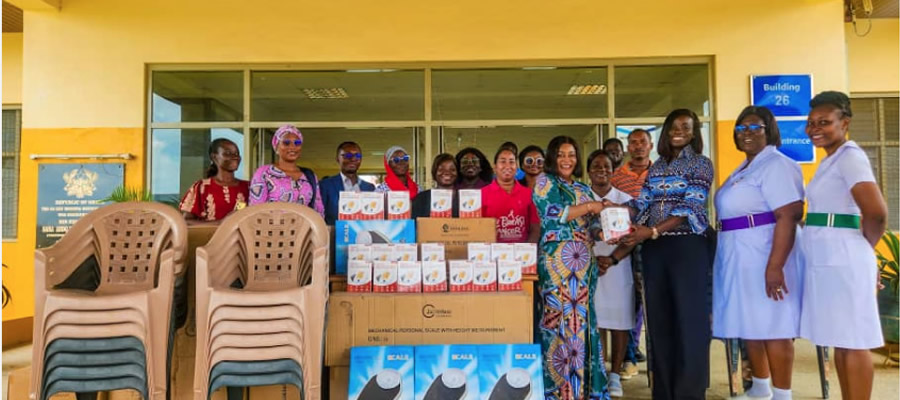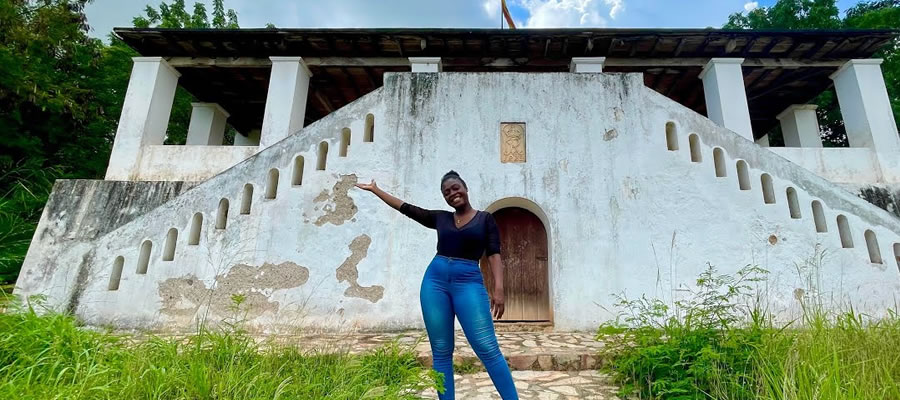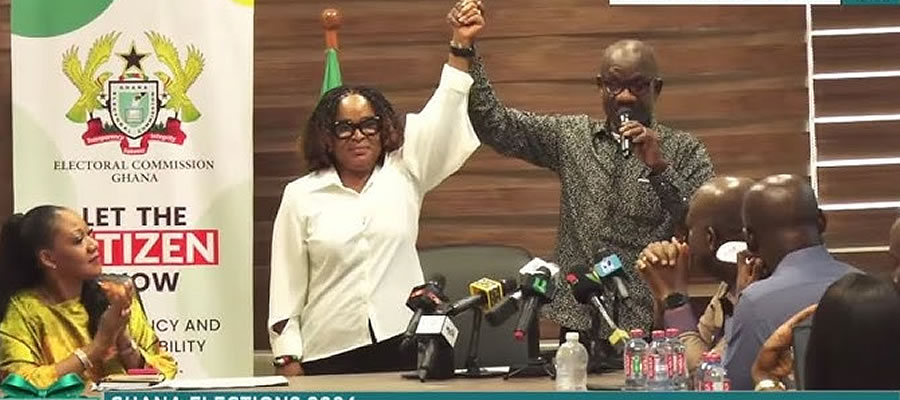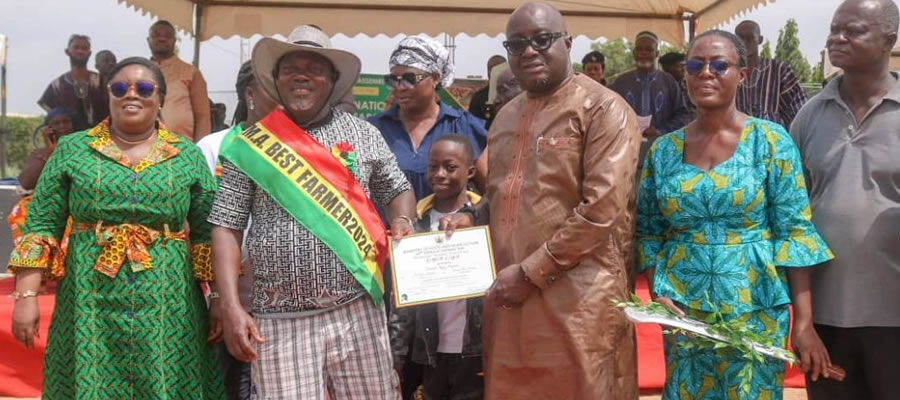

Introduction
The previous chapter was a review of GSGDA II and the current situation of the Municipality as well as a summary of the key development problems. This chapter therefore presents summarised development issues to the relevant Development Dimensions of the Agenda for Jobs (2018-2021).
Identified Development Issues under GSGDA II and Development Dimension, 2018-2021
On the basis of the summarized key issues in chapter one, the MPCU adopte four out of the five goals. This was because there were no issues link to it. The adopted goals were;
1. Create opportunities for all Ghanaians
2. Safeguard the natural environment and ensure a resilient built environment
3. Maintain a stable, united and safe society
4. Build a prosperous society
Community Needs and Aspirations
The MPCU considered all the electoral area Action Plans which includes their needs and aspirations. Harmonization was done with issues identified to identify the relationships between them. Refer to annex 6 for the ranking of the issues. Issues with strong links were grouped to determine the ones that should be carried on in the new framework. Table 2.1 is a compilation of the GSGDA II issues and the Agenda for Jobs.
Potentials, Opportunities Constraints and Challenges (POCC) Analysis
The adopted issues of GEMA were further subjected into analysis of potentials, opportunities, constraints and challenges (POCC) in relation to the prioritized development issues was undertaken to enable the MPCU take informed decision in the formulation of strategies and interventions that will best address the identified development issue. The analysis also provides information on the relative viability of the issue how easily they interventions formulated could be implemented.
The POCC analysis therefore provides vital information to facilitate implementation of the plan since alternative interventions can be developed to mitigate the impact of a particular challenge on the development efforts.
Where significant potentials and opportunities exist to support the implementation of a programme, the development issue is accepted for further consideration. In the situation where the constraints will greatly hinder implementation an alternative scenario is considered.
Challenges are external situations that the Assembly cannot control. In view of this therefore, the effective management of identified challenges will be a priority in the implementation of programmes and projects. The detailed POCC analysis is given in annex 4.
The impacts of the issues considered as priorities from the POCC analysis were assessed using the following criteria;
• The relevant issue had significant linkage effect on meeting basic human rights and satisfied human rights approach to programming.
• The issues also have significant multiplier effect on economic efficiency.
• Efforts were made to ensure that interventions would impact on all manner of persons particularly the vulnerable in society. The proposed interventions were to ensure balanced development, judicious use of natural resources as well as cultural and social acceptability. In terms of projects, they be economically viable as well as technologically appropriate.
• Climate change issues were also not left out so that the already degraded environment would be salvaged.
• Other cross cutting issues have also been adequately taken care of, these include gender, the environment, nutrition HIV and AIDS.
Sustainability Analysis of the Issues
These issues were further subjected to sustainability analysis for internal consistency and compatibility. The strategic environmental analysis helped to determine how the prioritised issues relate to or support each other to make implementation successful. Issues with positive relationships were carried though. This is against the backdrop that policies should complement each other and not work again each other. The prioritised issues with positive significant impacts were subjected to strategic environment analysis.
To ensure that environmental concerns have been adequately catered for as far as the policies, programmes and projects together with their activities are concerned and to ultimately achieve a green economy, the sustainability test tools were applied. The adopted development issues were used for the compatibility matrix while the corresponding adopted objectives were used for the compound matrix. The matching strategies were then used for the sustainability tests. These tools give a visual and a quantitative measure of the extent to which activities provide sustainable growth and development. A set of criteria was applied namely to cover the various elements of the enviroement namely; natural resources, social and cultural conditions, economy and institutional issues.
To test for the overall sustainability of the activities, the sustainability criteria matrix was used. This tool is designed mainly to give visual and a quantitative measure of the extent to which activities outlined in the plan could provide sustainable growth and development without which the goal of improving the quality of life cannot be achieved.
A set of criteria based on measures to reduce negative effects were applied to see their effect on natural resources, social and cultural conditions, the economy and on institutional issues. A score of 1 to 5 in Table 2.3 is used based on the performance of the activity in relation to the criteria. The ones that have negative environmental effects are the waste management issues, however, measures to control them have been identified. These include more public education on the negative attitude towards disposal as well as the pay-as-you-dump to generate revenue for better management. There are also plans to treat both solid and liquid waste to reduce the negative impacts on the environment.
The overall performance of the activities was quite promising. Those involving construction impacted negatively on almost all the components of natural resources namely; deforestation, pollution, ecotourism and climate change with the obvious result of the destruction of wildlife and their habitats which are tourist attractions in themselves.
In order to minimize the negative impacts measures, such as tree planting, watering landscaping to check erosion around public buildings would be done. Others are inclusion of environmental concerns into all the skills development and capacity building trainings to address the issue of pollution as well as reclaiming degraded lands. There would be increased stakeholder consultations during project implementation so the desire of achieving a green economy would be a collective responsibility.
Implementing agencies for these activities together with the Central Administration are; EPA, MOFA, Forestry Commission, Ghana Tourism Authority and the REP. A summary of results from the use of the tools as well as their scores have been presented in the annex 9. These were done to enable the team formulate sustainable projects and programmes with the SEA fully integrated into the plan.
The overall performance of the activities was quite promising. Those involving construction impacted negatively on almost all the components of natural resources namely; deforestation, pollution, ecotourism and climate change with the obvious result of the destruction of wildlife and their habitats which are tourist attractions in themselves.
In order to minimize the negative impacts measures, such as tree planting, watering landscaping to check erosion around public buildings would be done. Others are inclusion of environmental concerns into all the skills development and capacity building trainings to address the issue of pollution as well as reclaiming degraded lands. There would be increased stakeholder consultations during project implementation so the desire of achieving a green economy would be a collective responsibility.
Implementing agencies for these activities together with the Central Administration are; EPA, MOFA, Forestry Commission, Ghana Tourism Authority and the REP. A summary of results from the use of the tools as well as their scores have been presented in the annex 9. These were done to enable the team formulate sustainable projects and programmes with the SEA fully integrated into the plan.
Projections for Health
By a standard of 1 hospital to 75,000 people, the municipality would require one hospital to cater for the population. This is because the stress on the existing health facilities exceeds 75,000. Though the municipality requires an additional hospital, there are some health facilities located throughout the municipality which can cater for the health needs of the people. However, these need to be adequately staffed to provide quality health service to the people.
The crop projection shows the potential for the Municipal to increase its crop production and yield annually. To achieve this potential however, the current agricultural practices would have to be modernised. Instead of subsistence, small land holding cropping, there should be conscious efforts to adopt large-scale mechanised plantation agriculture with improved irrigation system.
Extension personnel should also assist farmers to implement modern farming methods as well as activity improved and high yielding varieties of crops. These measures together would ensure food security for the municipal. The spin offs of such investment are to increase employment and enhance the development of post-harvest management principles including agro-processing industries
Within the period of the MTDP 2018-2021, the municipality will embark on improving on the existing infrastructure. The municipality will rehabilitate existing roads and construct additional length of roads to link all communities in order to facilitate easy transportation both within and outside the municipality.
To ensure that the municipal’s staff is adequately housed, the municipal will embark upon construction of low cost houses to accommodate the municipals staffs and staffs of other decentralised departments. Electrification and sustainable energy will be given the needed attention within the plan period. The Assembly will explore the use of bio-gas for lighting and power needs of the Assembly offices and the residential area. This will be done in close collaboration with the beneficiary communities. The main objective of this is to ensure that communities become part of the implementation process.
In the area of sanitation, one area has been identified for the construction of a transfer station. Again, all households will be registered for collection of refuse. The Assembly is making frantic efforts to provide household toilets for households without access to toilet in the Municipality. To accertain additional socio-economic infrastructural services that should be provided within the medium term in order to achieve the national development objective, the above projections made has been transformed into a map. Figure 3.1 shows projected medium-term requirement for GEMA.
Adopted Development Issues, Development Dimensions and Goals
Table 3.6 shows the development dimensions and the adopted goals as well as the development issues for the Municipality.
DEVELOPMENT PROGRAMMES AND SUB-PROGRAMMES OF GA EAST MUNICIPAL
Introduction
The programme - based budgeting requires the Assembly to come out with appropriate programmes and sub-programmes under each of the policy objectives adopted. This chapter take a closer look at broad development programmes for 2018 to 2021 to address the Municipal Goal. To solve the development issues prevailing in the Municipality, a detailed financial plan has been outlined in this chapter. The Chapter discusses the development programmes for the planning period covering all the adopted thematic goals.
Development Programmes and Sub-Programmes of GEMA for 2018-2021 Reflecting International Obligation and Sustainability Measures.
In order to address the issues identified earlier and to achieve the spatial development option together with the development focus, broad programmes were identified. These were done to ensure consistency, continuity as well as complementarity in implementation. The broad programmes which are both physical and non-physical have been presented in Table4.1 with their corresponding sub-programmes. Mitigation measures for addressing environmental issues in the SEA have been integrated into all the final priority programmes.
Development Programmes /Sub-Programmes of Action of GEMA for 2018-2021 Linked to the Programme-Based Budgeting and Reflecting International Obligation and Sustainability Measures.
The composite Programme of Action (POA) shows the adopted objectives, strategies, the locations, indicators, time frame, indicative budgets and implementing department. It has been done in line with the issues identified for each goal. The details POA is provided in Annex 11. Projects and programmes distribution would be done to ensure that development is seen in every part of Municipality.|
To ensure that the planned programmes have national impacts across the social, economic, environmental as well as spatial areas, a number of exercises were carried out in the process of formulating POA. It came out that, programmes /activities to be implemented scored very high in respect of priority. Inter and intra-sectoral considerations were made for proper coordination in implementation. Figure 4.1 shows the locations of the new projects and programmes to be implemented within the planned period. Figure 4.2 depicts a composite map overlaying all sector.
Indicative Financial Strategy
Preparation of a plan without funds for the execution of various actions expected to give meaning to the people is a problem. The POA for the four years is expected to be funded from GoG, IGF and possibly Donors. The source includes licences, fees and, rates, taxes, investment income and miscellaneous charges. The Annual Action Plans for 2018-2021 is given in Annex 12,13,14 and15. Table 4.2 shows the total cost of implementation of the four-year plan per the outlined programmes of the Municipality.
The total cost for the plan implementation is GH¢94,594,278.00. The Municipality expected revenues from GoG, IGF, Donors and other sources of funds stool at GH¢6,225,546.20 GH¢ 1,683,510.00, GH¢2,675,000.00 and GH¢222,891.25 respectively, giving a sum of GH¢10,806,947.45. The difference is GH¢83,787,330.55. The gap would be finance by using PPP arrangements and Equity
Financing (Using acquired lands). Ga East will intensify revenue mobilisation through the following strategies;
• expanding the scope of revenue base through a valuation and revaluation of taxable revenue,
• automate IGF collection
• Validate and updated revenue database.
• The Assembly will continue to use of Resident Associations as they have shown good performance over last two years.
Prudent financial management must be paramount in every organisation. Therefore, GEMA would ensure that expenditure falls within the budget estimates.
Date Created : 11/20/2017 6:59:14 AM













 facebook
facebook
 twitter
twitter
 Youtube
Youtube
 +233 593 831 280
+233 593 831 280 0800 430 430
0800 430 430 GPS: GE-231-4383
GPS: GE-231-4383 info@ghanadistricts.com
info@ghanadistricts.com Box GP1044, Accra, Ghana
Box GP1044, Accra, Ghana